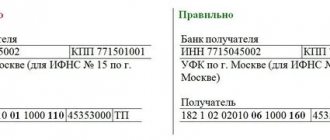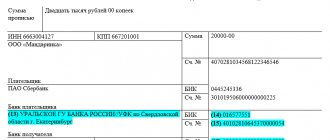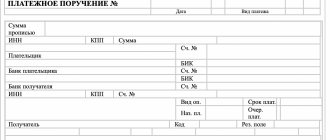Is it possible to charge penalties on penalties?
This article describes in detail whether it is possible to charge penalties on penalties, and everything you need to know about it. In Russia, many people have debts for utilities, loans, and fines. If they are not paid on time, a person may end up in a debt trap associated with the accrual of fines and penalties on the principal debt. To understand the legality of accruing these penalties to the debtor, it is necessary to fully understand this issue, study the civil code of the Russian Federation, as well as the relevant government regulations.
Rules for calculating penalties
The existing debt of a citizen of the Russian Federation is constantly increasing due to fines and penalties accrued to him. Is this legal? This question is relevant at all times. The rules for calculating penalties are stipulated in government decree number 1063, adopted in 2013. It talks about all the rules for calculating fines and penalties for failure to fulfill their financial obligations by the performer, recipient or organizer of services.
The amount of fines and penalties must be specified in the contract for the supply of services. If there is no such item, then they are calculated in accordance with government decree number 1063.
In accordance with it, the fine is calculated as follows:
- If the cost of the services provided is less than three million rubles, then the fine should be set at ten percent of the principal debt;
- If the cost of the services provided is more than 3 million rubles and borders on fifty million rubles, then the amount of the fine should be set at five percent of the principal debt;
- If the cost of the services provided is between fifty and one hundred million rubles, then the amount of the fine should be set at one percent of the principal debt;
- If the cost of the services provided is more than one hundred million rubles, then the fine should be set at half of one percent of the principal debt.
These fine rules apply throughout the Russian Federation. The amount of accrued penalties is also established by this provision. They are formed as follows:
It is necessary to know the cost of services provided by the supplier, as well as the amount paid by the purchaser of services. In addition, you need to know the rate at which penalties are calculated. It is also not difficult to calculate; for this you need to know the refinancing rate of the central bank of the Russian Federation, as well as the total delay in days. Also, to determine how penalties should be calculated, for each day or for a certain period of time, you need to calculate the coefficient.
The bet size is calculated using the following formula:
- Rate = Cst * efficiency, where Cst is the rate of the central bank of the Russian Federation, and efficiency is the total number of days of delay.
- The amount of interest accrued is calculated according to the following formula:
Penalty = (C - IO)* Rate, where C is the entire amount payable, IO is the fulfillment of the obligation under the contract, Rate is the rate calculated above.
To determine the coefficient, you need to refer to the formula:
- Coefficient = (Days of delay/fulfillment of obligations) * 100%.
Penalties are calculated for each day of delay in the amount of:
- 0.01 refinancing rate if the coefficient is 0 and below 50;
- 0.02 refinancing rate if the coefficient is from 50 to one hundred;
- 0.03 refinancing rate if the coefficient is more than one hundred.
In what cases can penalties be avoided?
The accrual of penalties cannot be avoided. In any case, they will be charged on the principal amount of the debt. But it should be noted that penalties cannot be accrued on penalties under any circumstances.
In accordance with Article 404 of the Civil Code of the Russian Federation, the amount of the fine can be reduced in the following cases:
- If the debt occurred due to the fault of both parties to the contract;
- If the service provider intentionally increased the debt, which does not comply with legal requirements.
Also, in accordance with Article 333 of the Civil Code of the Russian Federation, the amount of penalties can be reduced:
- If the amount of the penalty is greater than or equal to the amount of the entire debt;
- If the claimant, with the help of these penalties, can obtain an unjustified benefit;
In accordance with the Civil Code of the Russian Federation, and in particular with Article 394, the amount of the penalty can be reduced if this is provided for in the contract, or the contract provides for the payment of only the debt or only the penalty.
To avoid falling into debt, you must make all payments on time. If the law does not provide for the accrual of penalties on penalties, then there is a law that allows the service provider to increase the amount of debt through fines and penalties for each day of delay. The debtor should begin paying the principal immediately. You can always agree with the creditor on the possibility of installments and suspension of the accrual of penalties. Therefore, there is no need to be afraid of him, but you need to make contact with him.
In this article, you learned whether it is possible to charge penalties on penalties. If you have any questions or problems that require the participation of lawyers, then you can seek help from the specialists of the Sherlock information and legal portal. Just leave a request on our website and our lawyers will call you back.
Editor: Igor Reshetov
Subsidies without certificates
In addition, from January 1, 2021, changes to the Housing Code of the Russian Federation will come into force, which will simplify the receipt of subsidies and compensation for the cost of housing and utilities. As before, Russians who have debts for housing and communal services will not be able to receive subsidies, but now authorities will independently receive this information.
“If previously citizens had to take a certificate from the management company stating that they have no debts in order to receive a subsidy, now the social security authorities themselves will request the certificate from the Federal Bailiff Service, since debts for housing and communal services must be confirmed only by something that has entered into legal force. a judicial act,” explained Pavel Sklyanchuk, an expert at the ONF “Housing and Urban Environment” thematic platform.
Those Russians who spend more than a certain share of their income on monthly payments for housing and communal services can receive subsidies, and each region sets this norm independently. For example, in Moscow you can receive a subsidy if utility costs exceed 10% of the total family income, in St. Petersburg - 14%.
What formula can you use to calculate tax penalties?
To calculate penalties for late transfers of payments to the budget, you must use the following formula:
Penalties = Amount of arrears × Number of days of delay × 1/300 of the refinancing rate
When calculating penalties for payment, the accountant in this formula must use the actual values of the refinancing rate that were in effect during the period of late payment of taxes (clause 4 of Article 75 of the Tax Code of the Russian Federation). That is, if the refinancing rate changes during this period, you need to calculate penalties separately for the periods of validity of each refinancing rate, and then add up the resulting amounts.
Until October 1, 2017, this calculation formula was used by all taxpayers without reference to the length of the period of delay.
But from October 1, 2017, for legal entities that allow a delay in payment for a period of more than 30 calendar days, this calculation has changed. The change applies to a period of delay beyond 30 calendar days, concerns arrears that arose only after September 30, 2017, and is expressed in doubling the amount used in the calculation of the rate (subclause “b”, clause 13, article 1, clause 9, art. 13 of the Law “On Amendments...” dated November 30, 2016 No. 401-FZ). That is, the calculation formula additionally used in the event of a long delay in payment by legal entities looks like this:
Penalties = Amount of arrears × Number of days of delay × 1/150 of the refinancing rate.
If tax authorities decide to round up the interest rate for accrual of penalties, for example, to whole values, which will lead to an increase in payment, then such actions of inspectors can be appealed either to a higher tax authority or in court (Article 137, paragraph 1 of Article 138 of the Tax Code of the Russian Federation) . Moreover, the courts often take the side of taxpayers, as, for example, in the resolution of the Federal Antimonopoly Service of the North-Western District dated November 9, 2005 No. A42-5178/04-29 or the resolution of the 14th Arbitration Court of Appeal dated January 21, 2011 No. A05-9658/2010. This is due to the fact that the text of Art. 75 of the Tax Code of the Russian Federation does not provide for rounding of interest rates.
To calculate penalties, we recommend that you use our Penalty Calculator service.
Main options for contractual penalties
% of violation per day
- For late payment for the next batch of goods, the buyer is obliged to pay 0.1% of the cost of the batch for each day of delay
Spoiler
Comment One of the most honest amounts of liability under long-term contracts. You are 10,000 rubles late in paying for a shipment and you are answering within these limits.
% of the contract amount per day
- For late payment for a consignment of goods, the buyer is obliged to pay 0.1% of the contract value for each day of delay
Spoiler
Comment The main option for one-time contracts is one party, one transaction, one-time responsibility. However, in long-term contracts, this liability will lead to the fact that for a violation of a batch of 10,000 rubles, a penalty of millions can be presented.
% of the contract value for each violation
- For each violation under the contract, the buyer is obliged to pay 0.1% of the contract price for each day of violation
Spoiler
Comment Very strict responsibility in long-term relationships and many obligations under the contract. Violations can be trivial, for example, a document was not signed or an invoice was not collected on time, but the liability is measured in millions.
In recent years, these options have become the main types of contractual penalties. And such a penalty is calculated quite simply:
- We initially determine the amount of liability - based on the cost of the lot, or the cost of the contract;
- then we determine the number of violations and the period for each violation;
- All that remains is to multiply the size by the period;
- then repeat the algorithm as many times as there are violations.
Results
Calculation of penalties for taxes is done according to the formula given in paragraph 4 of Art. 75 of the Tax Code of the Russian Federation. It involves the amount of tax not paid on time, the number of days of delay and the rate, determined as a share of the refinancing rate in force during the period of delay. This share in the general case is 1/300. From 10/01/2017, for legal entities that allow a delay of more than 30 calendar days, another value of this share is applied - 1/150.
The need to calculate penalties for tax payments arises when accrued amounts of taxes, as well as mandatory insurance payments to the state treasury, are paid later than the deadlines established in the relevant legislation.
It is important to know that the payment of taxes and contributions is considered completed only after presenting the corresponding order to the bank. It confirms the transfer of funds to the state treasury account.
At the same time, there must be a sufficient balance in the bank account of the person who submits the order at the time of making the payment. If all these criteria are not met, then additional, mandatory payments in the form of penalties are charged.
How exactly are penalties for rent calculated?
If it is quite difficult to pay for utilities for this reason, you can contact the management company with a request to defer payment for several days. As a rule, they accommodate consumers halfway. Calculation example To more clearly explain how rent penalties are calculated, a couple of examples of its calculation should be given: Example No. 1 The amount of debt for housing and communal services as of January 10, 2021 is 5,300 rubles.
In this case, the penalty will be calculated using the following formula: 2500*0.11/300*5=4.58 rubles. Example No. 2 The amount of debt for housing and communal services as of January 10, 2021 is 15,700 rubles.
Of these, 3100 rubles for August, 3150 for September, 3200 for October, 2900 for November and 3350 for December.
What is a tax penalty?
The definition of penalties is provided in the Tax Code of the Russian Federation. Penalty – represents the amount of money that the payer is obliged to pay in the event that fees and taxes were repaid by him later than within the time limits established by law.
The penalty must be paid in addition to the tax amount, and is calculated daily throughout the period of late payment. It begins to accrue immediately after the expiration of the tax or insurance payment period.
There is only one exception for the unified agricultural tax, for which the penalty is calculated in accordance with Chapter 26.1 of the Tax Code of the Russian Federation.
Penalties also play the role of a government instrument that ensures timely payment of taxes and fees. Because its accrual stops only on the day when the overdue payment was repaid. It is always calculated as a percentage of the unpaid amount for one type of payment.
The tightening of penalties for late payment of taxes in 2021 is described in the following video:
Mechanism for calculating penalties for housing and communal services
This figure must be divided by 100, and then entered into the formula for calculating interest on debt. The formula is as follows: the 2nd and 3rd months of non-payment after delay are calculated in this way: the debt is multiplied by the Central Bank rate, divided by 300 and multiplied by the days of late payment - a penalty is obtained. From the beginning of the 4th month, the formula is calculated as follows: the debt is multiplied by the rate, divided by 130 and multiplied by the days of delay. Accordingly, the amount of debt, taking into account penalties, is becoming larger every day, and starting from the 4th month, the debt will double faster.
In the case when the consumer does not pay the debt after many months, the amount comes out much more, since in addition to the debt, the penalty also increases, and it depends on the size of the payment. The penalty stops accruing when the debt for housing and communal services is repaid.
The debt is reduced based on which delay occurred first.
Accrual of penalties
The accrual and calculation of tax penalties is regulated by the state Tax Code.
There are several main reasons for charging penalties:
- the most common is when the taxpayer did not pay the monetary obligation within the prescribed period;
- when the tax control authority has identified an understatement of the tax payment amount;
- there is a circumstance when the accrual of penalties may apply to the tax agent if he transferred the amount of the payer’s tax payment later than the required deadlines (that is, when the delay occurred due to the fault of tax inspectors);
- The accrual of penalties can be carried out not only on the market within the state, but also on transactions of import and export of goods across the border (customs duty).
There are also cases when a tax penalty is not charged:
- is not accrued on the amounts of arrears incurred by the payer of taxes and fees, due to his provision of explanations in writing about the procedure for accrual and payment of payments, or due to his solution of other tasks related to the current legislation of the Tax Code of the Russian Federation, given to the payer by the local tax authority. In order for such circumstances to be taken into account when deciding on the calculation of penalties, they must be confirmed by an appropriate document. It can be obtained from the tax office. The above exception also applies to tax agents (when they are obligated to pay a fine, this clause may exempt them from payment);
- if the taxpayer has an overpayment for the relevant types of payments;
- if the amount of the overpayment completely covers the penalty;
- is not accrued in full if the amount of overpayments is less than the amount of arrears by type of tax, in which case the penalty is reduced in proportion to the amount of the missing arrears.
Overpayment is money that includes surpluses resulting from the payment of taxes, penalties, and fines. It can be used to pay off debts if the following conditions are met:
- the overpayment is transferred to cover the arrears by the tax authorities;
- transfer of overpayments can only be carried out to pay off local, regional and federal taxes.
Tax underpayment revealed: how to avoid a fine
Article 122 of the Tax Code of the Russian Federation provides for a fine of 20% of the amount of arrears , which is imposed on the subject for late (incomplete) payment of tax. However, if the taxpayer pays off the arrears on his own before the tax authority finds out about it, pays penalties and submits an updated return, then no fine will be assessed. But for this you need to follow this procedure:
- calculation of the amount of penalties;
- payment of tax arrears and penalties;
- submission of an updated declaration.
In other words, when a debt is identified, you should not immediately rush to submit a “clarification.” After all, as soon as the inspection receives it, it will become aware of the arrears and will have a reason to issue a fine. First you need to pay off all debts, and then report them to the Federal Tax Service.
We recommend that you familiarize yourself with the material about tax returns and penalties for failure to file them.
Calculation procedure
Penalties are calculated for each calendar day of the current delay in payment of the insurance payment or tax.
For example, the tax must be paid by March 30, but the taxpayer was unable to deposit the required amount to pay off the tax debt until the 30th inclusive. This means that penalties begin to accrue from March 31st. It will be accrued until the day the tax debt is paid in full. But there is one peculiarity when determining the timing of the accrual of penalties. The period of its accumulation is not precisely defined in the Tax Code of the Russian Federation, so it needs to be clarified with the regulatory tax authorities.
The amount of the penalty is calculated as a percentage in relation to the amounts of overdue tax payments. The percentage is equal to 1/300 of the established refinancing rate of the Central Bank of the country.
The current formula for calculating penalties for the current year:
Penalty = (overdue tax obligations * refinancing rate / 300) * duration of delay in calendar days
The refinancing rate is a constantly changing value, therefore, in the process of calculating penalties, the rate that is current on the day the penalty is calculated is taken.
How are penalties calculated for late rent in 2021?
For subsequent months, the formula will be as follows: debt * refinancing rate / 130 * number of days overdue for making payments. The penalty will be accrued until the debtor repays the entire debt. Moreover, on the day the debt is repaid, penalties will also be charged. For those who do not want to calculate the formula themselves, you can find out the amount of late fees using an online calculator. You can find it using an Internet search engine; nowadays, a large number provide such a service. It should be taken into account that the calculator will work correctly if the debt was repaid once. When making several payments, that is, when paying off the debt in parts, you will have to use several equations, each of which will reduce the remaining amount of the debt and change the number of days following from payment to payment.
Peculiarities of accrual for late tax advances
In addition to all of the above, the current Tax Code of the Russian Federation specifies specifics when calculating penalties for certain types of tax advances.
Transport tax
It is a mandatory tax payment collected from all vehicle owners (both individuals and legal entities). Paid to local tax authorities once a year. The penalty for this type of tax begins to accrue 3 months after non-payment of payment.
Its size is calculated by the formula:
P = refinancing rate (%) * amount of overdue payment * number of days of non-payment / 300
That is, the formula is the same as when calculating other types of taxes. In addition, if the delay was made deliberately, then the person who failed to pay the tax will be required to pay a fine, the size of which is on average 30% of the amount of all overdue payments.
Property
If property tax payments are late, owners are subject to penalties in the form of penalties, accrued every day of late payment. In order to determine the amount of the penalty, the refinancing rate of the Central Bank of the Russian Federation is used.
A fine is assessed by local tax authorities that have identified a payment violation. They issue a notification document for the payer indicating the amount of tax. At the beginning of the tax period, each owner of taxable property is sent a notice of his tax obligations and the deadlines for their payment. When the notification does not arrive, you must contact the tax administration. The calculation formula is standard.
Land
In cases of arrears of land tax, it is calculated on the same principle as for other types of taxes. But there is also a kind of fine for late payment of tax - 20%, for legal entities and individuals, of the unpaid tax amount, and in the amount of 40% if the non-payment was intentional.
The tax authority must send a tax notice to the individual with a requirement to pay the tax and the penalty accrued on it.
Income tax
For advance payments of income tax, it begins to accrue after the expiration of a period equal to one month from the date of non-payment. The accrual occurs in accordance with Article 75 of the Tax Code of the Russian Federation. That is, the rest of the calculation procedure is standard.
The rules for calculating penalties for advances under the simplified tax system are discussed in this video:
Fresh materials
- Clarification on 4 FSS When it is necessary to adjust 4-FSS The calculation presented in the FSS in form 4-FSS does not need adjustments if...
- Social tax 2021 Tax accrualIn accounting, the amounts of advance tax payments are reflected in the credit of account 69 (68)…
- Tax planning Tax planning in an organization Tax planning can significantly affect the formation of the financial results of an organization,…
- Why do they buy gold? Selling gold competently is a process that will require you to spend some free time. It will be necessary to find out...
How to calculate the penalty?
The procedure for calculating penalties can be either simple or complex. It all depends on the penalty. Let's consider the calculation of penalties, because a penalty in the form of a fine does not cause problems.
The general algorithm for calculating penalties is simple: there is the amount of liability, there is the period of violation - all that remains is to multiply them.
The period of violation is usually days (weeks, months, years). Therefore, 95% of penalty calculations are simply multiplying the number of days by the amount of liability. And if it is easy to calculate the number of days of the violation period in Excel or LibreCalc: last date - first date + one day , then determining the amount of liability causes problems.
Free legal consultations online
for the collection and receipt in cash and non-cash form of receivables, including operations for the return by borrowers of loans and borrowings, deposits, including those placed with the Bank of Russia, and other funds placed, as well as penalties, penalties and fines, return of advance payments to a credit organization , receiving funds from the redemption of securities and income from securities owned by a credit organization by right of ownership, reclaiming and returning property of a credit organization held by third parties;
Accounting for penalties in enterprise reporting
In Moscow there is an overpayment, but at OKATO near Moscow there is an underpayment and penalties are charged. After contacting the tax office with an application to transfer the overpayment from OKATO in Moscow to the Moscow region and recalculating the penalty, the answer was received that the overpayment had been transferred, but the tax office was not going to remove the penalty, citing that the organization should have made a reconciliation earlier.
If an individual can simply pay a fine, then the organization needs to record every financial action. For these purposes, a sub-account is opened in the financial statements to account number sixty-eight, entitled accordingly. To record data, entries are used for accrued penalties on taxes, as well as for penalties paid to the budget.
Even if an organization intends to challenge the decision of the tax service to assess penalties, it is best to pay tax penalties within the allotted time frame in order to fulfill obligations. After this, if the courts decide in favor of the company and not the tax authority, the fines paid will be returned, and the relevant data can be entered in the records.
It is also worth remembering that tax penalties and various fines are not taken into account when calculating income tax.
- Accrual of penalties - postings 2019
- Penalties on insurance premiums posted
Consequences of failure to pay taxes on time
In this case, the Tax Service has the authority to file a claim with a judicial institution to collect debts. Based on the decision made, the debt can be repaid at the expense of the debtor’s property. For example, withdraw funds from a bank account.
People who are hiding from taxes will have to pay money according to a court decision.
You can file a claim with the defense authorities within three years from the date of the first demand to close the debts. There are two possible outcomes:
- If the total amount of the debt does not exceed three thousand rubles, then the tax officer can file a claim within six months after the three-year period has expired.
- If the total amount of debt is above three thousand rubles, then the Tax Inspectorate has the right to sue six months after the moment when the amount exceeded three thousand rubles.
Note! The decision of the court may be made without the personal presence of both parties if all information is considered clear and understandable. The defaulter is given a period of twenty days from the date of delivery of a copy of the decision to raise objections. In this case, the order is immediately canceled, and the process will take place with all participants.
If the tax letter has not arrived. Who is to blame for this?
If a person has not received a notice of tax payment within the period prescribed by law, then he must independently solve this problem. In a situation where he understands that he has property subject to taxes, the payer himself goes to the appropriate institution and makes the payment.
If the letter is not received, this does not mean that the citizen is exempt from mandatory fees. He must go to the nearest branch of the Federal Tax Service and clarify the final amount of the tax payment.
No later than December 31 of the year following the expired tax period, a person must go to the tax office. There he needs to provide information about all the property for which the “letter of happiness” did not arrive. If the notification came earlier or the person is exempt from paying taxes, then there is no need to report this.







